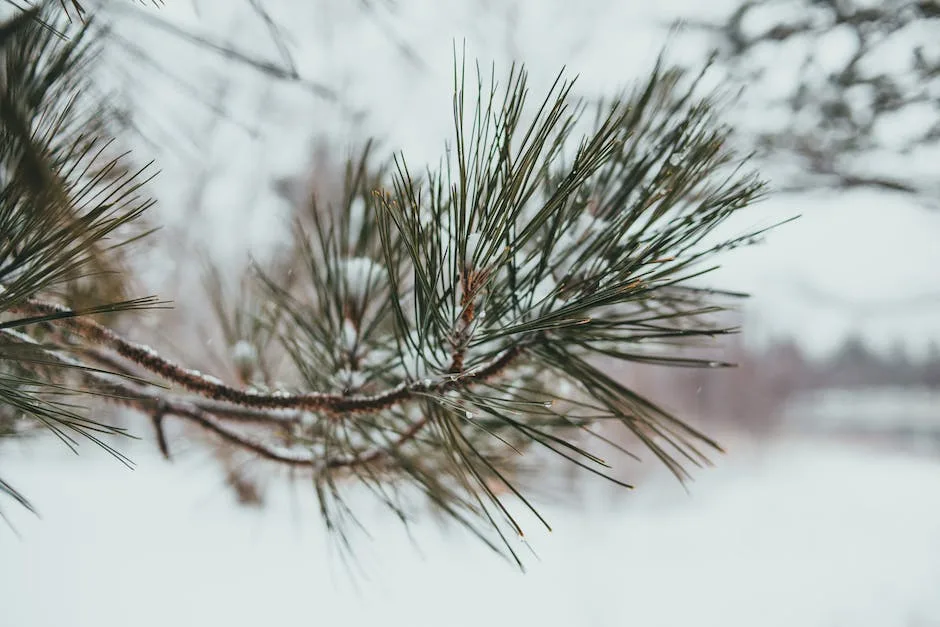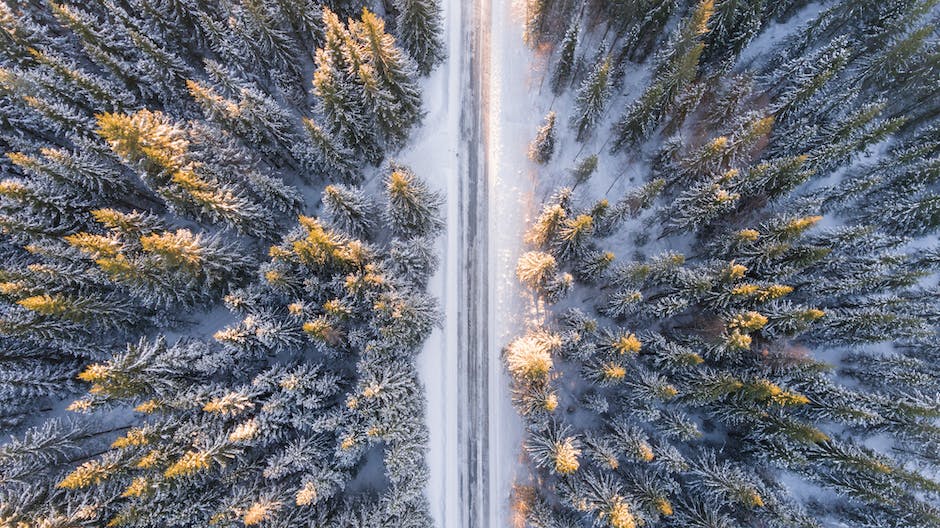Most people are familiar with the yellow dust that coats cars and windowsills during springtime. This “pollen” is actually tiny grains released by trees and other plants as part of their reproductive process. Depending on the species, pollen release can occur any time from late winter to early summer. For pine trees, the pollen season generally lasts from late March through early May.
Pine trees release pollen for about 2 to 3 weeks in the spring.
How long do pines release pollen?
The pollen from pine trees is relatively short-lived, only lasting a few weeks. This gives people with allergies a chance to prepare for the other tree pollens and weed pollens that will be around until next fall.
Pine trees will start producing pollen after temperatures consistently hit 55 degrees or higher. The end of April, the month of May, and early June are typically the peak of the pine pollen season.
How long does tree pollen stay active
The tree pollen season is a time when many people experience allergies. This is because the pollen from trees can be very irritating to the nose and throat. The best way to avoid this is to stay indoors as much as possible and to avoid being around trees. If you must go outside, be sure to wear a mask to protect your nose and mouth. The grass pollen season is typically mid-May through early-to-mid-July. This is when the pollen from grasses can be very irritating to the nose and throat. The best way to avoid this is to stay indoors as much as possible and to avoid being around grassy areas. If you must go outside, be sure to wear a mask to protect your nose and mouth. The ragweed season is usually from mid-August until that first frost. This is when the pollen from ragweed can be very irritating to the nose and throat. The best way to avoid this is to stay indoors as much as possible and to avoid being around ragweed. If you must go outside, be sure to wear a mask to protect your nose and mouth.
If you suffer from pine pollen allergies, there are a few things you can do to try and reduce your symptoms. Pollen levels are typically highest in the morning, so if you can, avoid going outdoors during that time. When the air is dry, pollen can also travel more easily, so it’s best to stay inside on those days. If you do go outside, try to wear a mask or keep your mouth and nose covered as much as possible. And finally, after a heavy rain, the pollen levels will be lower, so that’s a good time to go out and enjoy the outdoors.
What time of day is pine pollen worst?
Pollen counts are highest in the morning and early afternoon, which is also when allergies are often the worst. This is because there is a high concentration of pollen in the air during these times.
If you suffer from allergies, spring is probably the worst time of year for you. Pollen levels are at their highest during this season, which can trigger symptoms like sneezing, congestion, and itchiness. If you’re particularly sensitive to tree pollen, you may want to consider staying indoors as much as possible during the peak allergy season.
Do pine trees carry a lot of pollen?
Pine trees are evergreen trees that produce high levels of pollen. The pollen is often visible on outdoor surfaces. Contrary to what you might think, pine pollen allergies and “Christmas tree” allergies are two different things.
Pollen is the male gametophyte of seed plants. It is produced in the microsporangia (pollen sacs) and is the agent of fertilization of the ovule, resulting in the creation of a seed. Trees produce a large amount of pollen in order to ensure that some of it will find its way to a female tree and create new seeds. This is because the wind is unpredictable and can blow the pollen away from its intended destination. By producing a large amount of pollen, trees increase the chances that some of it will reach a female tree and create new seeds.
Do pine trees release pollen every year
Pines are one of the most dominant groups of trees in most parks. They are interesting because they produce separate male and female cones. The pollen produced by male cones is carried to female cones by the wind.
If you’re noticing your allergies are worse at night, it might not be the pollen levels that are to blame. Instead, indoor triggers could be the culprit. “A lot of people are allergic to things in their bedrooms,” said Dr. George La Polt, an allergist and immunologist in New York. “It could be their blankets, their pillow, dust mites.” Adding these triggers into the mix can make your allergies feel worse at night.
Do trees drop pollen at night?
Night and early morning are the best times to spread pollen according to many plants. The wind plays a big role in how high the pollen will be carried and how long it will stay airborne. By noon, the wind may have already died down, causing the pollen to fall back down to the ground.
Pollen is one of the leading causes of allergies and can be a big problem for people who suffer from them. During the day, hot air rises and carries pollen with it. At night, the air cools down and the pollen falls with the air. Most pollen lands on the ground in rural areas around 8 pm and 10 pm.
Why is pine pollen good for you
Pine pollen is a type of pollen that is collected from pine trees. It is believed to have anti-aging properties and to be able to treat various health conditions. Additionally, pine pollen is thought to boost testosterone levels. Although research into the health benefits of pine pollen is ongoing, the results so far suggest it has antioxidant and anti-inflammatory properties.
Pine pollen is an amazing superfood that provides a broad spectrum of vitamins, minerals, all essential amino acids and immune system boosting antioxidants. It is a highly nutritious food that can help improve overall health and well-being.
What is the best allergy medicine for pine pollen?
Antihistamines can help relieve sneezing, itching, a stuffy or runny nose, and watery eyes. Examples of oral antihistamines include cetirizine (Zyrtec Allergy), fexofenadine (Allegra Allergy) and loratadine (Claritin, Alavert).
Corticosteroid nasal sprays help reduce inflammation. These medications improve nasal symptoms.
If you suffer from allergies, you’re certainly not alone. It’s estimated that up to 30% of the population suffers from some kind of allergy, and in many areas of the United States, spring allergies begin in February and last until the early summer.
Tree pollination begins earliest in the year followed by grass pollination later in the spring and summer and ragweed in the late summer and fall. If you’re allergic to pollen, you may find that your symptoms are worse on days when the pollen count is high.
There are a number of things you can do to try to reduce your symptoms, including staying indoors when the pollen count is high, wearing a dust mask when you’re outdoors, and showering and changing your clothes after being outdoors. You can also try over-the-counter or prescription medications to help relieve your symptoms.
If you’re dealing with allergies, don’t suffer in silence. Talk to your doctor about what you can do to feel better.
Why does pollen get worse at night
Pollen levels tend to be highest at night for a variety of reasons. During the day, pollen rises with the warm air and then sinks back down to ground level as night falls and the air begins to cool. Some plants also release their pollen in the evening, which can contribute to the high pollen levels in the air. If you’re allergic to pollen, it’s important to be aware of these patterns so you can take steps to protect yourself.
If you suffer from allergies or asthma, be aware that rain can cause a sudden increase in symptoms. This is because when it rains, the pollen on the ground gets broken up into smaller particles and scattered around. So if you are outdoors during a rain shower, you may suddenly start feeling the effects of allergies or asthma more strongly.
Does rain make tree pollen worse
Pollen is a powdery substance that is released into the air by plants. It is a major cause of allergies, and can cause symptoms such as sneezing, itching, and watery eyes. During a rainstorm, the force of the falling rain can splinter clumps of pollen into many smaller particles that can spread more rapidly. For this reason, it’s a good idea to stay out of rainstorms if you’re sensitive to pollen.
Grass pollen is one of the most common airborne allergens, and it can cause a variety of symptoms in people who are allergic to it. These symptoms can range from mild to severe, and they can include everything from sneezing and watery eyes to difficulty breathing and a drop in blood pressure. Some people may also experience anaphylaxis, which is a potentially life-threatening reaction. If you’re allergic to grass pollen, it’s important to avoid exposure to it as much as possible. You should also talk to your doctor about ways to manage your allergy and reduce your symptoms.
What are the worst trees for pollen
If you’re allergic to trees, it’s important to know which varieties to stay away from. Some of the worst tree allergens include oak, pecan, Phoenix palm, red maple, silver maple, sycamore, walnut, and willow.
If you suffer from seasonal allergies, think twice about knocking on a pine tree during spring. Pine pollen, which is dispersed by the wind, generally disperses within 300 feet from the original tree.
How common is pine tree allergy
Although a pine tree allergy is uncommon, it is possible to be allergic to pine nuts or pine pollen. These allergens are released into the air during springtime, when pine trees are pollinating. If you are allergic to either of these substances, it is important to avoid exposure to them during this time of year.
Allergy to pine trees is generally considered rare, with most cases being clinically insignificant. However, a study in Arizona found that 15% of atopic patients were sensitive to pine pollen antigen. This suggests that the allergy may be more common than previously thought.
Warp Up
Pine trees release pollen for about two weeks in the spring.
Pine trees release pollen for a period of six to eight weeks. The pollen is released in the morning and evening hours. The tree produces a large amount of pollen during this time.

My interest in trees started when I first saw the giant sequoias in Yosemite.
I was a teenager then, and I remember thinking, “I need to learn more about this.”
That moment stuck with me.
A few years later, I went on to study forestry at Michigan Tech.
Since graduating, I’ve worked in a mix of hands-on tree care and community education.
I’ve spent over ten years helping people understand how to plant, maintain, and protect the trees in their neighborhoods.
I don’t see trees as just part of the landscape.
They are living things that make a real difference in our daily lives.
